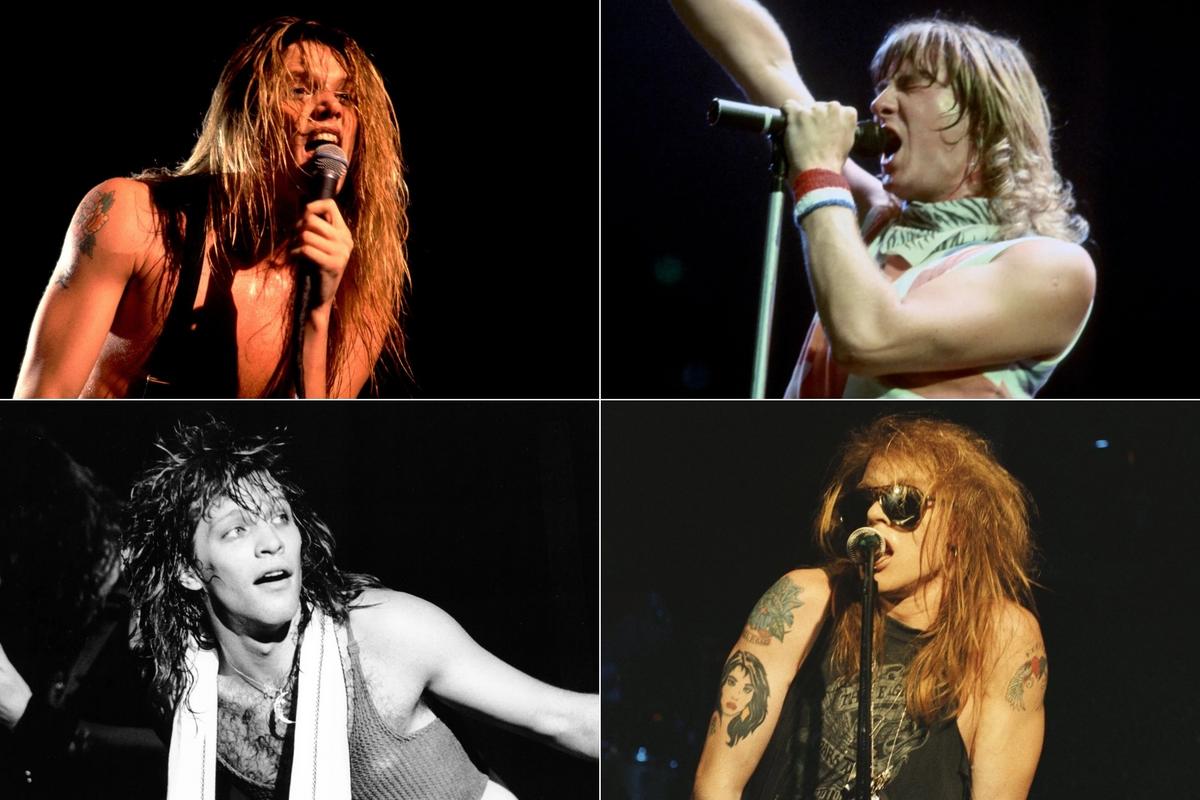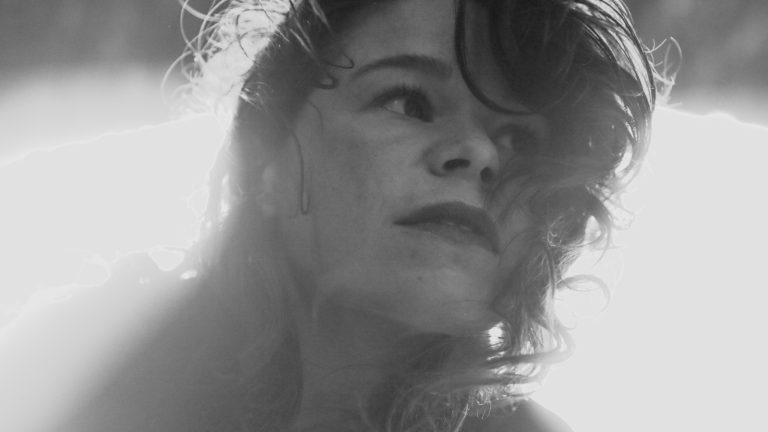Hair metal — that dreaded colloquialism for the commercial, party-hearty hard rock that dominated the airwaves in the ’80s — is known for its hotshot guitar players and over-the-top showmanship. But many of the era’s biggest and best bands also had great singers to match their six-string wizards.
We’re giving a nod to those golden-throated frontmen in our list of the Top 15 Hair Metal Singers. As always, our ranking comes with qualifications. Some of the vocalists on this list did not perfectly fit the glam metal mold, but they were such massive talents and pivotal players in the scene that it would be disingenuous not to include them. On the flip side, we’ve excluded some singers who preceded the hair metal zeitgeist even if they also took part in it. That means no Steven Tyler or Paul Stanley — though we did bend this rule as needed.
Got all that? Good. Now read on to see our picks for the Top 15 Hair Metal Singers.
READ MORE: Top 40 Glam Metal Songs
15. Michael Sweet (Stryper)
Imagine Dennis DeYoung fronting a Christian glam metal band and you’ll have a good approximation of Michael Sweet’s vocal prowess. The frontman’s soaring tenor and ironclad vibrato gave spiritual exhortations like “To Hell With the Devil” the heft they deserved. Sweet’s power-metal proclivities served Stryper well in their later years, especially on 2011’s The Covering, which features covers of Iron Maiden, Judas Priest and Deep Purple. Sweet even served a stint in Boston from 2007-2011 following the death of Brad Delp.
Key performance: “To Hell With the Devil”
14. Tom Keifer (Cinderella)
There are plenty of moments throughout Cinderella’s catalog where lead singer Tom Keifer forces the listener to ask, “What the hell is this guy doing?” If that’s not the mark of a one-of-a-kind vocalist, then what is? Keifer’s raspy, skyscraping vocals sound like the result of gargling motor oil before hitting the vocal booth, lending to Cinderella’s rootsy, bluesy take on glam metal. He could also dial down the intensity on the band’s plaintive, heartfelt ballads.
Key performance: “Nobody’s Fool”
13. John Sykes (Blue Murder)
The odds were stacked against Whitesnake guitarist John Sykes after David Coverdale fired him. But not only did Sykes form a new band that allowed him to flex his guitar chops, he also took over lead vocals and nearly matched his former bandmate in that department. Blue Murder’s 1989 self-titled debut is a technical tour de force, with bassist Tony Franklin and drummer Carmine Appice flanking Sykes as he pulls double duty. His bluesy crooning and searing high notes are the sound of sweet revenge.
Key performance: “Blue Murder”
12. Jack Russell (Great White)
While some glam metal vocalists prioritized grit and rasp, Great White’s Jack Russell flaunted a voice that was buttery-smooth and could scale octaves with ease. Russell brought plenty of power to bluesy, straight-ahead rockers like “Once Bitten Twice Shy” and “Lady Red Light,” but he could also caress and unfurl notes with expert precision on slow-burning tracks like “House of Broken Love.”
Key performance: “Rock Me”
11. Joe Elliott (Def Leppard)
By the time Def Leppard released the blockbuster Hysteria, they had begun to decenter Joe Elliott’s lead vocals in favor of their signature multipart vocal harmonies. But listen to any of the band’s first three albums — particularly High ‘N Dry and Pyromania — and it becomes instantly clear what a monster vocalist he is. Elliott’s voice is charismatic and powerful, capable of carrying tender ballads or full-throttle rockers. He can summon the grit on command and hit daunting high notes with ease, but his ability to blend with his bandmates turned Def Leppard into one of the biggest bands of the glam metal era and beyond.
Key performance: “Photograph”
10. John Corabi (The Scream, Motley Crue)
John Corabi didn’t become a well-known commodity until hair metal was long dead and gone, replacing Motley Crue’s Vince Neil for the band’s 1994 self-titled album. But his work on that album and on the Scream’s 1991 debut Let It Scream demand recognition. Corabi is a powerhouse vocalist who graduated with honors from the Steven Tyler School of Rasp, and his bluesy, blistering screams turned Motley Crue into legitimate metal heavyweights. Of course, nobody cared to listen, and Corabi quickly got the boot, but the journeyman rocker has continued to do great work in Union, the Dead Daisies and more.
Key performance: “Smoke the Sky”
Warrant excelled at horndog party-metal anthems, but even these had more substance than many of the band’s peers thanks to lead singer and songwriter Jani Lane. The frontman’s thoughtful lyrics and melodies and powerful pipes elevated frothy rockers like “Down Boys” and the menacing, metallic “Uncle Tom’s Cabin,” but his soaring high notes turned ballads like “I Saw Red” and “Heaven” into genuinely moving declarations of love and heartache.
Key performance: “I Saw Red”
8. Jason McMaster (Dangerous Toys)
Deep in the heart of Texas, Dangerous Toys kicked up a metallic, southern-fried ruckus that defied the typical hair metal conventions. The Austin-based rockers wore their metal influences on their sleeves, and singer Jason McMaster led the band with an ear-splitting wail that produced some otherworldly high notes. McMaster’s powerhouse vocals and the band’s savvy blend of melody and muscle made Dangerous Toys a no-brainer opening act for Judas Priest in 1991.
Key performance: “Queen of the Nile”
7. Jon Bon Jovi (Bon Jovi)
Bon Jovi scored approximately 100 billion hits during their golden 1986-1995 run, and they owe much of that success to Jon Bon Jovi’s megawatt vocals. The titular frontman’s unbridled passion and charisma radiate through songs like “Wanted Dead or Alive” and “Livin’ on a Prayer,” turning them into stadium-filling, lighter-waving anthems. As the band matured, so did Bon Jovi’s vocals, and he continued to reach new heights on 1992’s Keep the Faith and 1995’s These Days.
Key performance: “In These Arms”
6. Ray Gillen (Badlands)
Following a short-lived stint in Black Sabbath, Ray Gillen teamed up with ex-Ozzy Osbourne guitarist Jake E. Lee in the bluesy hard rock outfit Badlands. Based on their self-titled 1989 debut, it proved to be both musicians’ true calling. Gillen matched Lee’s bluesy shredding pound-for-pound with his soulful howl, stunning high notes and brilliant vibrato. Gillen’s life and career were cut short when he died from an AIDS-related disease in 1993 at age 34, but the first two Badlands album remain underrated gems largely thanks to his contributions.
Key performance: “High Wire”
5. Axl Rose (Guns N’ Roses)
Guns N’ Roses owed a greater debt to Aerosmith and the Rolling Stones than Ratt and Poison, but still, it would be a disservice not to include one of the era’s most unique and charismatic singers on this list. Axl Rose’s superpower was his versatility — the mercurial frontman could channel myriad emotions through one of his several voices, from his feral alleycat screech to his plaintive, heartsick baritone. When he combined these disparate voices on the same track, the results were transcendent.
Key performance: “Sweet Child O’ Mine”
4. David Coverdale (Whitesnake)
David Coverdale was burning up the charts in Deep Purple when most of the singers on this list were still in grade school, which makes his hair-metal reinvention with Whitesnake 15 years into his career even more impressive. The band’s self-titled 1987 album was a critical and commercial smash, making great use of Coverdale’s bluesy growl (“Crying in the Rain”) and stratospheric high notes (“Here I Go Again”). He utilized both on “Still of the Night,” a bonafide glam metal epic and the definitive Whitesnake song.
Key performance: “Still of the Night”
3. Miljenko Matijevic (Steelheart)
Steelheart scored their first and only Top 40 single with 1991’s “I’ll Never Let You Go,” powered by Miljenko Matijevic’s jaw-dropping vocal acrobatics. Matijevic’s “easy mode” tenor would make mincemeat of most singers, and just when it seems like he can’t possibly push his voice any further, he screams another intergalactic high note with piercing clarity. Matijevic also voices Steel Dragon frontman Izzy Cole (played by Mark Wahlberg) in the 2001 movie Rock Star, leading a remake of Steelheart’s “We All Die Young” that trumps the original.
Key performance: “I’ll Never Let You Go”
2. C.J. Snare (Firehouse)
Firehouse is best known for mega-ballads “Love of a Lifetime” and “When I Look Into Your Eyes,” two songs that are virtually identical to one another and would be indistinguishable from the glut of late-period hair metal ballads if not for C.J. Snare’s evocative, supercharged vocals. Snare was no one-trick pony either; his flawless articulation, well-placed grit and multi-octave range elevated pop-metal stompers like “Don’t Treat Me Bad” and gave a sense of theatrical danger to the outlaw anthem “Reach for the Sky.”
Key performance: “Don’t Treat Me Bad”
1. Sebastian Bach (Skid Row)
From 1989 to 1995, there was nothing Sebastian Bach couldn’t do vocally. The Skid Row frontman transformed the band’s pop-metal hits and power ballads into epic, stadium-sized anthems, and he gave their metallic tracks the muscle and menace they deserved. Bach flexed his enormous vocal range in the melismatic runs of “18 and Life” and “I Remember You,” but his tender, nuanced performances on “Quicksand Jesus” and “In a Darkened Room” proved he was one of the most gifted vocal interpreters of all time.
Key performance: “Wasted Time”
10 Underrated Hair Metal Bands That Deserved to Be Way Bigger
Even as the genre hurtled toward irrelevance, several bands eked out terrific, underappreciated music.
Gallery Credit: Bryan Rolli




Leave a Comment